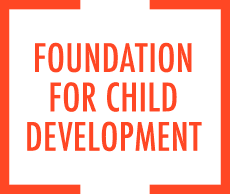https://www.fcd-us.org/pk-3-what-is-it-and-how-do-we-know-it-works/
The Foundation for Child Development’s Advancing PreK-3rd Series
No. 4
This Policy Brief describes the five components of PK-3 based on analyses of data from longitudinal and nationally representative research. Components of a coherent PK-3 program include alignment, school organization, qualified teachers, classrooms as learning environments, and accountability. The brief makes recommendations as to what state departments of education and local school boards and districts can do to incorporate a PK-3 approach into existing programs.
-----------------------------------------------------------------------------------
As evidence mounts, more and more American political and education leaders are concluding it’s wise to invest in Prekindergarten (PK) education. Economic analyses show prevention of poor educational performance costs less than its remediation. And the promise PK shows for boosting student achievement appeals to leaders under increasing pressure from state and federal education accountability measures required by No Child Left Behind. Without early education programs, children growing up in low-income households lose ground to their middle-class peers, a gap that only widens as they advance through elementary school.
Most leaders, however, continue to view early childhood education narrowly as an initiative to prepare children for Kindergarten. This brief argues that policy makers can reap a better return on their PK investments if they adopt a more expansive view of this first stage of education as a period extending from PK through third grade.
Studies show investing solely in PK is not enough. While well-designed PK does improve children’s social and cognitive skills, these gains fadeout as children advance beyond Kindergarten.
This does not have to happen. A growing body of research shows that children continue to make gains in schools that connect PK to a full-day Kindergarten and primary grades with aligned standards and curriculum in a coherent PK-3 education program. In these schools, which remain rare, fadeout is much less common.
Studies show that a PK-3 strategy includes the following five components:
School Organization
- Voluntary, full-school-day Prekindergarten is provided for all three- and four-year-old children.
- Full-school-day Kindergarten that builds on PK experiences is required for all children.
- School districts provide principals and teachers with ongoing professional development and planning time to ensure alignment.
- Principals foster teamwork among PK-3 teachers.
- Principals connect elementary schools with families, communities, and all early childhood programs.
Alignment
- Standards, curriculum, instruction, and assessment are aligned within and across grades from PK through third grade.
- Standards, curriculum, instruction, and assessment focus on social competence and self-discipline as well as academic skills and subject matter.
Qualified Teachers
- All teachers have at least a Bachelor’s Degree with relevant specialized training.
- Preparation and certification enable teachers to teach at any grade level from PK to third grade.
- Teachers are capable of assessing students’ achievement and enabling each student to make progress.
Classrooms as Learning Environments
- Instruction balances child-centered approaches with teacher-directed approaches.
- Classes are staffed by a well-qualified teacher and assistant teacher.
- Assessment practices are used to improve instruction in classrooms.
- Student-teacher ratios allow each child to receive individual attention and foster strong relationships with adults in the school.
Accountability to Parents and Community
- Teachers and families work to set educational goals for children.
- Schools are responsible for reporting students’ progress to families, communities, the school district, and the state.
